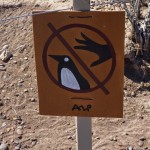Lake Titicaca – Highest Navigational Lake in World
Imagine yourself sometime before the thirteenth century, and someone in your community gets the idea that they would like to build a movable island in case a group wanted to attack you and your family. You then proceed to construct a floating island out of local reeds, adding layer upon layer until you had a stable surface in which you could live on. One bonus is if you ever got mad at your neighbor, you could simply cut off your part of the floating reed island. To keep your new home from sinking or deteriorating, you would cut and add new layers of reeds as needed.
For the Uros, a pre-Incan people, they did just this. Today, Lake Titicaca is listed as a UNESCO World Heritage Site and is South America’s largest freshwater lake and also the highest navigational lake in the world. To me, it’s pretty darn cool – a group of people who thought of building their own islands out of reeds and then living on them. They made watch towers, were ready for potential attacks, raised families, cooked meals and adapted to all the requirements of living on a bunch of floating reeds.
Visitors can access Lake Titicaca from either Peru or Bolivia. Some say the Bolivian side is better, others say the Peruvian side is better and some claim it doesn’t matter claiming the islands have changed too much from what they were in the past. I think taking a spin around the world’s highest altitude navigable lake and hanging out on a floating island for a while is worth it. Here is how our day started.
Be prepared to pay a little bit extra money for the ladies to row you around in a boat, that part is not included in the tour, they don’t tell you that, and it would be somewhat awkward not to get rowed around in the boat.
The islanders do have crafts for sale that are of high quality. If you are looking for gifts, you may find some nice options and it will be a cool story when you tell people where you got them from.






























 Previous Post
Previous Post Next Post
Next Post
My fingers just ache thinking of all that weaving, that is a LOT of reeds! Nice article of an unusual life style.
It is a lot of reeds. It was so interesting all the correlations with the reeds providing food, shelter, a mass of land to live on, sources of income from the handicrafts the make out of them, mode of transportation. The reeds are so integral to their lifestyle.
Places are beautiful. but it is very hard to live in this kind of places. people always struggle for their life in these places.
Indeed Sally, Lake Titicaca was so beautiful, but the struggle to maintain a high standard of living was obvious. Hopefully visitors will do their best to put money towards fair, sustainable tourism. Thanks for the comment!
I always love the colors of South America. Their culture is so warm, bright, vivid and inviting. It is hard not to want to check it out.
I know what you mean! Those ladies on Lake Titicaca, their fabrics were so beautiful!
WOW! Very cool but looks like a hard life. Did I see solar panels in a couple of your pics and were those sun dried ducks for eating or something else?
Yes, there are solar panels. The people living on the islands do not disapprove of the modern conveniences. Some families use motor boats, solar panels, maybe a generator to have one fridge for the community to share.
As far as I know, the birds were for eating. But now I am wondering what they were going to make out of them. Guess we’ll just have to go back one day and find out! 🙂
Нello, jսst wanted to tell yߋu, I likedd tɦis blog post.
It wаs inspiring. Keеp on posting!